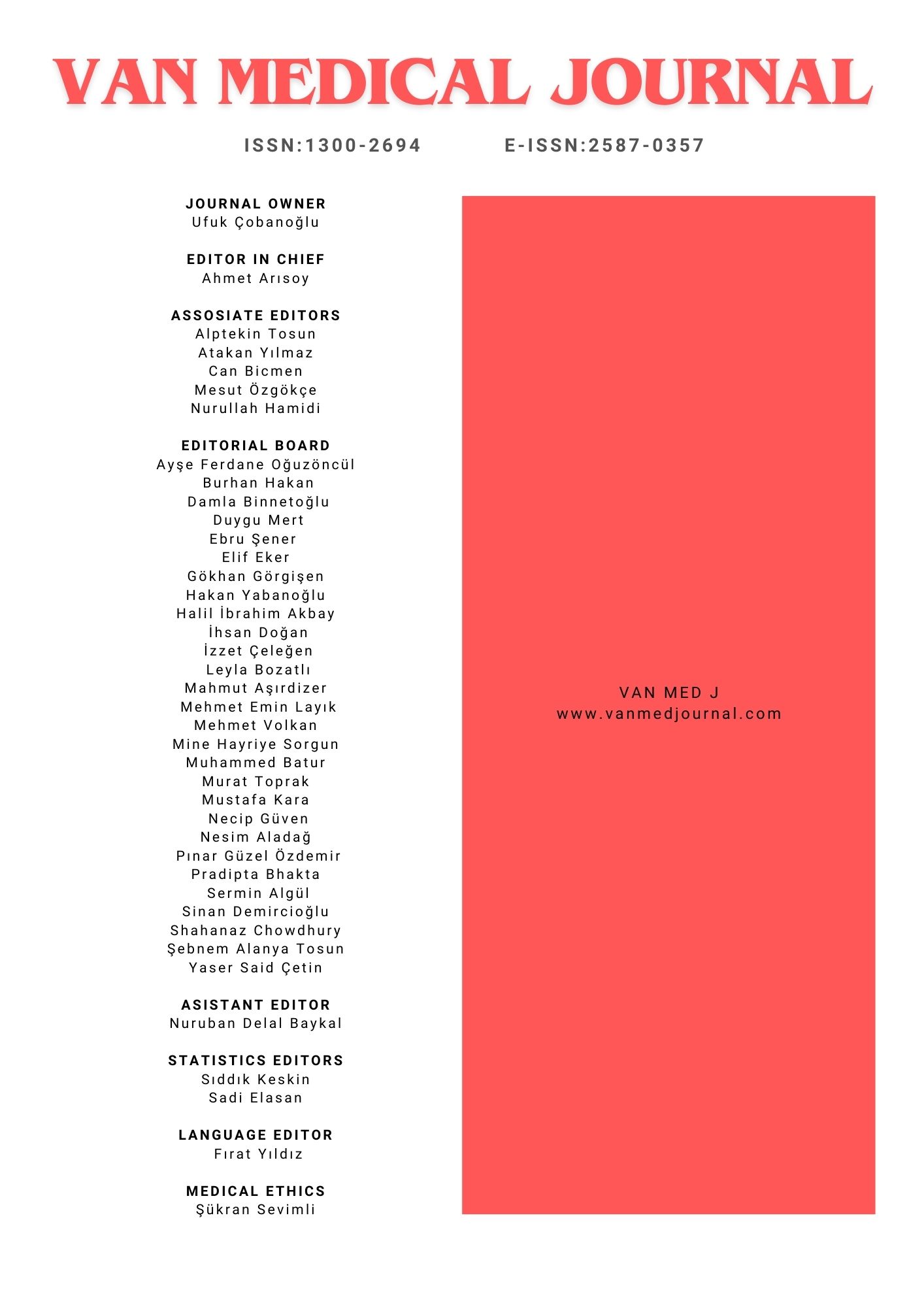Clinical Approach in Malign Pleural Effusion: Analysis of 49 Patients
Ufuk Çobanoğlu1Y.Y.Ü Tıp Fakültesi Göğüs Cerrahisi AD VanAim: It was aimed to discuss effectiveness of treatment modality and complications of malignant pleural effusion. Methods: Forty nine patients with malignant pleural effusion were analyzed retrospectively. It was assessed in terms of applied treatment procedures, response to treatment and developed complications. Results: Thoracenthesis had been applied to 14.28 % of patients with deteriorated general condition and whose life expectancy was short. The ratio of patients that had been applied chemical pleurodesis was 61.22%. Chemical agent was applied to 26(86.6%) and 4(13.3%) patients by thoracostomy tube and thoracoscopy, respectively. Permanent catheter and Denver pleuroperitoneal shunt had been applied to 12.24% and 8.1% of patients, respectively. Pleuroectomy had been done in 4.08% of patients. Conclusion: Thoracenthesis should be performed in patients with malignant pleural effusion for diagnosis. Treatment of these patients is not possible only by thoracenthesis and tube thoracostomy. Pleural effusion is usually reoccurred in these patients after awhile. Pleurodesis and another pallative treatment modality should be added to thoracal tube drainage. If lung does not expand, chronic drainage options should be considered. Chronic pleural catheter and pleuroperitoneal shunt are among those options. Decortication can be another option for patients with longer survival expectations.
Keywords: Malign pleural effusion, pleurodesis, treatmentMalign Plevral Efüzyonda Klinik Yaklaşım: 49 Hastanın Analizi
Ufuk Çobanoğlu1Yüzüncü Yıl Üniversitesi, Tıp Fakültesi, Göğüs Cerrahisi AD,VanAmaç: Bu çalışmada, malign plevral efüzyonlarda seçilecek tedavi yöntemlerinin etkinliğinin ve komplikasyonlarının tartışılması amaçlandı. Yöntem: Kliniğimizde takip edilen 49 malign plevral efüzyonlu hasta retrospektif olarak incelendi. Hastalara uygulanan tedavi girişimleri, tedaviye alınan yanıtlar ve gelişen komplikasyonlar değerlendirildi. Bulgular: Genel durum iyi olmayan ve kısa yaşam beklentisi olan terminal dönemdeki torasentez yapılan hastaların oranı %14,28 idi. Kimyasal plöredezis uygulanan hastaların oranı %61,22 idi. Kimyasal ajan vakaların 26’sında (%86,6) tüp torakostomi içerisinden, 4’ünde (%13,3) ise torakoskopi yoluyla uygulanmıştı. Kalıcı kateter uygulanan hastaların oranı %12,24 ve Denver plöroperitoneal şant uygulananlar %8,1 idi. Hastaların % 4,08’ine plörektomi yapıldığı tespit edildi. Sonuç: Malign plevral efüzyonu olan hastalarda tanı konulması için torasentez yapılmalıdır. Sadece torasentez veya toraks tüpü drenajı ile tedavileri mümkün değildir. Bu hastaların büyük çoğunluğunda plevral efüzyon kısa sürede tekrarlamaktadır. Toraks tüpü drenajına plöredezis eklenmesi veya başka bir palyatif yöntemin kullanılması gerekmektedir. Akciğer ekspansiyonu sağlanamıyorsa kronik drenaj seçenekleri değerlendirilmelidir. Kronik plevral kateter veya plöroperitoneal şant bu amaçla kullanılabilir. Daha uzun sağkalım beklenen hastalarda dekortikasyon yapılabilir.
Anahtar Kelimeler: malign plevral efüzyon, plöredezis, tedaviManuscript Language: Turkish

